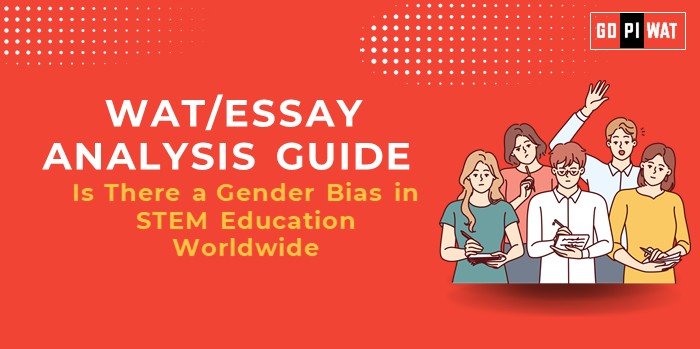📘 Is There a Gender Bias in STEM Education Worldwide?
🌟 Introduction to the Topic
Context Setting: “Despite global advancements in education and technology, a significant gender gap persists in STEM fields, reflecting deep-rooted societal and cultural biases.”
Background: Gender bias in STEM education has historical origins tied to stereotypes about gender roles and societal expectations. The global push for equity in education highlights this as a critical area for improvement. Recent efforts, such as UNESCO’s “STEM and Gender Advancement” program, underscore its importance.
📊 Quick Facts and Key Statistics
- 🌍 Global STEM Workforce Participation: Women comprise only 28% of the global STEM workforce (UNESCO, 2022).
- 📚 Access to STEM Education: Girls are 20% less likely than boys to pursue advanced math courses in secondary schools (OECD, 2022).
- 🌍 Regional Variations: In Africa, women make up just 18% of tertiary education STEM enrollments (World Bank, 2023).
- 💼 Wage Disparity: Women in STEM earn 20% less than their male counterparts globally (World Economic Forum, 2023).
- ✅ Positive Note: Countries like Iceland and Sweden have nearly equal STEM graduation rates among genders (UNDP, 2023).
👥 Stakeholders and Their Roles
- 🏛️ Governments: Set policies for gender-inclusive education and provide funding for scholarships and programs.
- 🏫 Educational Institutions: Reform curricula to remove gender bias and promote female role models in STEM.
- 🌐 NGOs: Run campaigns for awareness and mentorship and facilitate infrastructure for girls’ education in underserved regions.
- 💼 Corporates and Private Sector: Invest in initiatives like coding boot camps and scholarships for women and promote gender equity in hiring and leadership roles.
- 👨👩👧👦 Families and Communities: Encourage girls to pursue STEM from an early age and break stereotypes about gender and capabilities.
🎯 Achievements and Challenges
🏆 Achievements
- 🌍 Increasing female participation in STEM careers in developed countries.
- 💻 Rising awareness through global campaigns like “Girls Who Code.”
- 📚 Programs like “She STEMs” in Australia supporting girls’ STEM education.
⚠️ Challenges
- 🔄 Stereotypes: Cultural beliefs associating STEM with masculinity.
- 🌍 Infrastructure: Limited access to quality STEM education in rural areas.
- 📉 Retention Gap: High dropout rates among women in STEM professions.
🌏 Case Studies
- 🇮🇳 India: Initiatives like “Vigyan Jyoti” promote STEM careers among girls in rural areas.
- 🇺🇸 US: “Million Women Mentors” connects women in STEM with mentorship opportunities.
⚖️ Structured Arguments for Discussion
Supporting Stance: “Gender equality in STEM can significantly boost global innovation and economic growth.”
Opposing Stance: “Addressing gender bias in STEM education is complex due to ingrained cultural norms.”
Balanced Perspective: “While progress has been made, systematic efforts are needed to sustain gender equity in STEM globally.”
🗣️ Effective Discussion Approaches
- Opening Approaches:
- 📊 “Globally, women constitute less than 30% of researchers in STEM fields. Why is this significant?”
- 🌍 “Highlighting the success of countries like Sweden can provide valuable insights for addressing this issue.”
- Counter-Argument Handling:
Example:
Statement: “STEM bias is exaggerated as women are excelling in fields like medicine.”
Rebuttal: “Medicine is only one aspect of STEM. Other fields, such as engineering and physics, still exhibit significant gender gaps.”
🔍 SWOT Analysis
- Strengths: Growing awareness and funding for STEM education.
- Weaknesses: Cultural stereotypes and lack of role models.
- Opportunities: Technological advancements, scholarships for women in STEM.
- Threats: Socioeconomic barriers, wage disparities, and retention challenges.
🎓 Connecting with B-School Applications
- 📚 Real-World Applications: Gender equity in STEM can be linked to CSR initiatives, diversity management, and innovation in corporate settings.
- 💼 Sample Interview Questions:
- “What strategies can businesses adopt to promote gender equality in STEM?”
- “How can AI and technology help bridge the gender gap in STEM education?”
- 💡 Insights for Students: Importance of diversity for innovation and the value of mentorship and representation in leadership roles.


